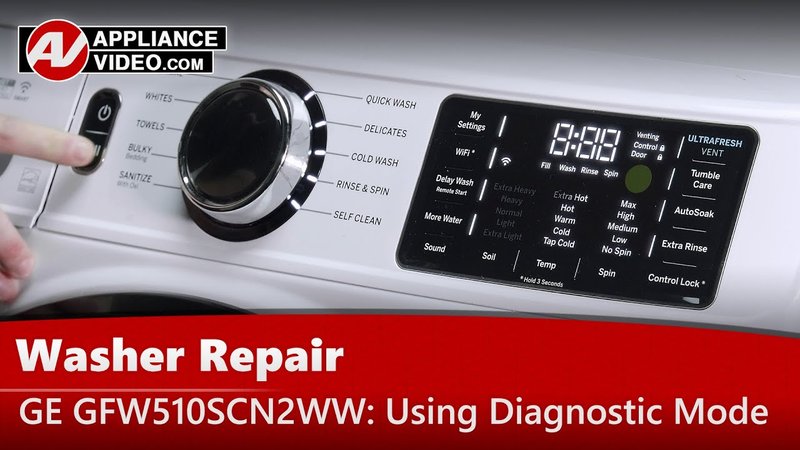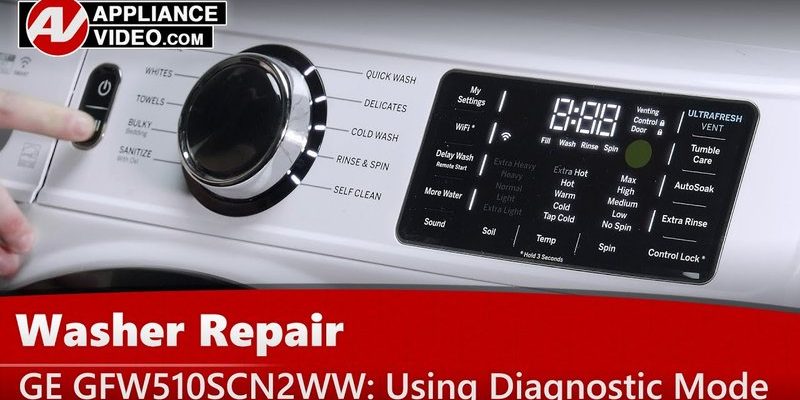
The “OE” error code on your GE washing machine signals a draining issue. In simpler terms, your washer is having trouble getting rid of the water inside the drum. This could be because of a multitude of reasons—anything from a kinked drain hose to a more serious internal fault. This guide aims to give you a clearer understanding of when you can roll up those sleeves and troubleshoot the issue yourself, and when it’s time to bring in the experts.
Understanding the OE Error Code
First things first, let’s break down what the OE error code actually indicates. Think of your washing machine’s drainage system like a water slide. The water needs a clear and unobstructed path to exit the drum—anything blocking the way can cause a backup, much like a leaf getting stuck in the water slide’s chute. When your washing machine displays the OE error, it’s basically telling you there’s a block in the system.
So, what causes this interruption? Commonly, it’s due to a blocked drain pipe or filter. Imagine shoving a garden hose into a bucket of muddy water and trying to drain it. All that gunk and grime would quickly cause a clog, wouldn’t it? Similarly, debris, lint, or even a small piece of laundry can get caught in the machine’s drain system. Alternatively, the issue could be a faulty drain pump. This little device helps push the water out of the washer, and if it fails, the water has nowhere to go.
Now, spotting the problem is just the first part. While some issues can be handled with a bit of elbow grease and a basic understanding of how your washer works, others might be best left to a professional. The key is knowing the difference, which we’ll delve into in the next sections.
DIY Troubleshooting Steps for the OE Error
Before you rush to the phone, there are a few steps you can take to determine if this is a problem you can fix on your own. Remember, it’s like dealing with a leaky faucet—sometimes all it needs is a twist of the wrench. Start by checking the basics: ensure the drain hose isn’t kinked or bent. A simple realignment might do the trick if it’s just misplaced.
Next, it’s worth inspecting the drain filter. Over time, small items like buttons or coins can get trapped in there, blocking the path just like leaves clogging a gutter. Unplug your machine and locate the filter, usually near the bottom front of the washer. Carefully pull it out and clean any debris you’ve found. Be prepared for some water to come out, so have a towel handy!
If your adventures in DIY have yet to solve the error, the issue might lie with the drain pump itself. This is a bit trickier, akin to replacing a car battery—doable with the right tools and knowledge but potentially risky without them. If you’re not comfortable tinkering with machine parts, it might be wise to consult someone who is. Here’s a tip: if your troubleshooting doesn’t address the problem quickly, don’t force it. That’s a sign it might be time for expert intervention.
When to Call a Technician
Alright, let’s say you’ve tried your best with the DIY route, but that pesky OE code just won’t go away. It’s time to call in the cavalry—an experienced technician who can diagnose and resolve more complex issues. But why is it necessary? Well, handling electrical components or internal parts without expertise can lead to further damage or even personal injury.
Technicians are trained to handle these situations safely and efficiently. They have the tools and expertise to delve deeper into the machine’s mechanics, much like a skilled doctor diagnosing a patient. It could be an issue with the circuit board or a more in-depth problem with the pump that only a pro can fix. Moreover, if your washing machine is still under warranty, tinkering with it yourself could void the warranty. Professional repair not only ensures the error is correctly dealt with but also retains your warranty’s validity.
In the long run, calling a professional at the right time can save you money and stress. It avoids further damage and ensures your washing machine is back in action as soon as possible. Just imagine the mountain of laundry piling up in its absence!
Preventative Measures to Avoid Future OE Errors
Now that you’ve hopefully waved goodbye to the OE error, let’s chat about keeping it at bay. A stitch in time saves nine, as they say, and regular maintenance can prevent many common washing machine woes. First, practice regular filter cleaning. Every month or so, make it a habit to check and clean the filter. It’s a small effort with big rewards.
Another tip is to ensure you’re not overloading the machine. An overloaded washer is like trying to fit too many clothes into a suitcase—it just won’t work well. This can put extra pressure on the drainage system, leading to potential blockages. Spread your loads throughout the week. Not only is it easier on the machine, but it also makes laundry days less daunting.
Lastly, occasionally check the drain hose for kinks and ensure it’s properly positioned. It’s a bit like doing a quick safety check before heading out on a road trip. This straightforward precaution can save you from headaches down the line. Remember, a little care here and there can keep your washing machine running smoothly and avoid those pesky error codes.
By understanding the OE error code and knowing when to call a technician, you can keep your household running smoothly without missing a beat. The next time your GE washing machine tries to send you into a panic with an error code, you’ll know exactly what to do.
